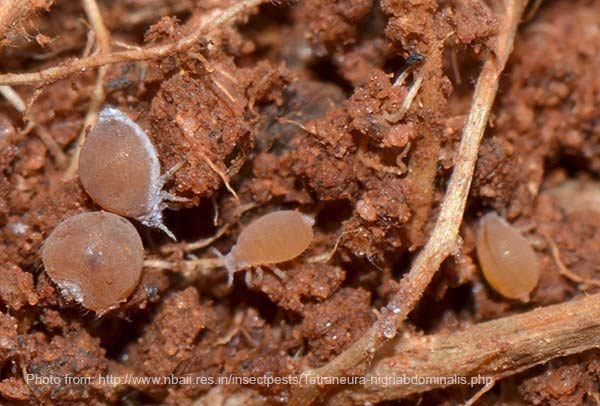Root aphid
Tetraneura nigriabdominalis Sasaki
 Wingless adults feeding on the roots
Wingless adults feeding on the roots
What it does
Adult and nymph root aphids suck the plant to remove fluids. The feeding damage causes yellowing of leaves and stunting.
Why and where it occurs
Rice root aphids are favored by drought. During this period, aphid populations occur unevenly.
Rice root aphids are dominant in well-drained soils in upland and rainfed rice. They are not present in irrigated rice. The adults are found on roots below ground level. They can also be located in cavities made by ants around the root system. The nymphs produce honeydew, which attracts ants. In return, ants transport the nymphs from plant to plant, protecting the growing aphids from predators and parasites.
 Photo from NBAII, IndiaHow to identify
Photo from NBAII, IndiaHow to identify
Check for leaf yellowing.
If root aphid infestation is very severe, stunting may occur. The stunting can be compared with the damage caused by root grubs.
To confirm cause of damage, check for presence of insect in the roots:
- globular and tan or brown nymphs
- greenish, to brownish white, to yellow, to dark orange adults feeding on plants
Why is it important
Rice root aphids infest during tillering stage. They are minor pests of rice, and are seldom widespread within a field.
How to manage
Encourage biological control agents or natural enemies that can manage the population of rice root aphids. Both the nymphs and adults are parasitized by a small braconid wasp and a mermithid nematode and are preyed upon by lady beetles.
Content expert: Jo Catindig (email: j.catindig@irri.org)